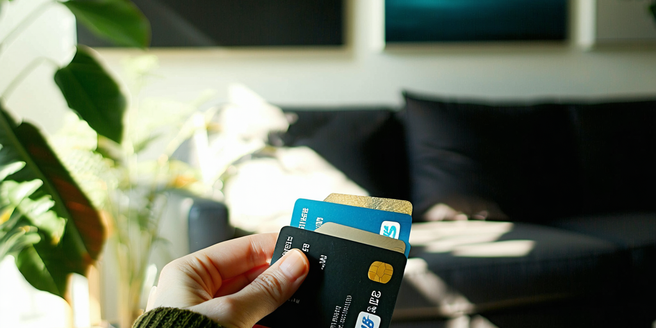
Understanding the Need for Temporary Financial Solutions
| Financial Constraint | Short-term Solution | Long-term Goal |
| Unexpected Expenses | Short-term loan | Emergency fund |
| Income Loss | Peer-to-peer lending | Job stability |
| High Debt | Credit negotiation | Debt consolidation |
| Cash Flow Issues | Credit card usage | Budgeting |
| Business Cash Needs | Crowdfunding | Investment equity |
Analyzing Your Current Financial Situation
One of the first steps in managing personal finances is understanding your current position. Begin by assessing your monthly income and expenses, ensuring that the latter does not outweigh the former. Create a detailed budget that includes fixed expenses like rent, utility bills, and food, alongside discretionary spending. Track any outstanding debts and understand the interest rates associated. This comprehensive overview can highlight areas where you can cut costs or reallocate funds. Understanding your financial standing can help you identify periods of the month when cash flow might become tighter. Such insights are crucial when considering temporary financial solutions, as they enable you to choose options that align with your ability to repay without compromising your future stability. Regularly revisiting and reviewing your financial analysis is fundamental to maintaining control and preparing for any unforeseen circumstances.
Short-term Loans: Pros and Cons
Short-term loans can offer quick access to cash and are appealing when faced with urgent financial constraints. They are typically easier and faster to secure than traditional loans, often requiring less paperwork and providing funds within days or even hours. However, the convenience comes with its own set of challenges. Interest rates on short-term loans can be significantly higher, which increases the total repayment amount. This could exacerbate financial strain if the borrower is unable to repay promptly. Additionally, these loans might require frequent payments over a short period, adding stress to someone already in financial trouble. Evaluating the terms, conditions, and alternatives before taking on such debt is crucial. Consider how this loan fits into your overall financial picture and whether it’s a necessity or a band-aid solution that could prolong or worsen your economic hardship.
Utilizing Credit Cards Effectively
Credit cards can be both a boon and a bane. Used wisely, they offer an excellent tool for managing cash flow, especially in the absence of immediate funds. They provide an interest-free period if used strategically, such as timing purchases right after the billing period starts. Furthermore, responsible credit card usage can help build a positive credit history, which is beneficial for future financial endeavors. Nonetheless, reckless spending can quickly lead to debt accumulation due to high-interest rates on unpaid balances. Cardholders should always aim to pay more than the minimum amount due, ideally clearing the full outstanding balance to avoid interest charges. Be wary of promotional offers and hidden fees. Develop a disciplined credit card strategy by setting spending limits and using it for planned expenses to ensure your credit usage remains a positive force in your financial toolkit rather than a stumbling block.
Exploring Peer-to-Peer Lending Options
Peer-to-peer (P2P) lending has emerged as an alternative financing option, breaking traditional barriers of bank loans. It connects borrowers directly with lenders through online platforms, often resulting in more favorable terms for both parties. Borrowers can benefit from lower interest rates compared to conventional loans and flexible repayment options that might not be available through banks. Furthermore, the accessibility of P2P lending platforms often means fewer qualifications are needed, making it viable for those with less-than-ideal credit ratings. For lenders, it presents an opportunity to earn a better return than savings accounts offer. Despite these advantages, risks persist as loans are typically unsecured, meaning borrowers could face high penalties for default, and investors might lose their lent capital. Therefore, while P2P lending can be a feasible solution, it’s pivotal to scrutinize the platform’s terms and conditions thoroughly before proceeding.
Employment Opportunities for Quick Cash
In times of fiscal stress, seeking temporary employment or gig opportunities can be an excellent way to boost income quickly. The gig economy offers countless options, from freelance work to ride-sharing or food delivery, allowing for flexible work schedules alongside existing commitments. Seasonal jobs, such as retail during holiday months or part-time work in hospitality, can also provide additional income. Besides the financial benefits, these roles could lead to skill development or future full-time opportunities. However, reliance on temporary work should balance with a long-term career strategy to ensure progress towards overall financial stability. It’s important to consider work-life balance when taking on multiple jobs simultaneously. Efficient time management and personal well-being should not be compromised in the pursuit of quick cash, as burnout can have counterproductive effects on both health and future financial potential.
The Role of Savings in Financial Flexibility
Having a savings cushion is integral to financial security and flexibility, aiding in both anticipated and unexpected financial needs. Building an emergency fund should be prioritized, allowing access to funds without disrupting daily expenses. Savings can help avoid high-interest debt by covering large purchases or emergencies. Even as little as three to six months’ worth of expenses can provide peace of mind and options for managing life’s unpredictabilities such as job loss or sudden health issues. However, the creation of such a fund requires discipline and may require cutting back on non-essential spending. Automating savings from your paycheck ensures consistent growth, incrementally reinforcing financial resilience. It’s advisable to reassess savings targets regularly to adapt to life changes and increased living costs. Thus, a robust savings plan supports overall financial planning by offering a layer of security and unencumbered decision-making potential.
Crowdfunding as a Financial Tool
Crowdfunding has transformed the way creative individuals and entrepreneurs access funding, providing a viable alternative to traditional finance routes. By leveraging online platforms, individuals can gather funds from a large number of people, each contributing a small amount, to reach a financial target for projects or causes. This approach not only raises funds directly but can also generate interest and support for an idea, attracting potential further investment or talent. However, success is not guaranteed and often depends on the strength of the pitch and the network’s engagement. Clear communication and transparency are essential to gaining trust from potential funders. With various types of crowdfunding, including reward-based and equity crowdfunding, it’s important to research which model suits your objectives. Properly executed, it can be a powerful tool to drive innovation without incurring additional debt but requires meticulous planning and consistent promotion.
Negotiating Payment Extensions with Creditors
When facing financial difficulties, directly contacting creditors to negotiate payment extensions can alleviate stress. Open communication is vital, as many creditors are willing to work with customers to adjust payment schedules, reduce fees, or temporarily lower interest rates. This proactive approach often results in more manageable payment plans and maintains one’s credit rating by avoiding late payments. Before initiating discussions, it’s advisable to understand your financial constraints clearly and propose realistic solutions, demonstrating willingness and honest communication. It’s equally crucial to get any agreements in writing for future reference. While renegotiations can provide immediate relief, consider them as part of a broader financial strategy aimed at long-term stability. Properly handled, these negotiations can offer breathing space to organize finances effectively and avoid accruing or exacerbating financial strain, becoming an important tool in crisis management.
Creating a Temporary Financial Plan
Crafting a temporary financial plan during challenging times is instrumental in regaining control over your financial path. Start by assessing all sources of income, fixed expenses, debts, and variable costs. Identify short- and medium-term financial goals and re-prioritize spending towards essentials, cutting back on discretionary expenses. Allocate a portion of your income for debt repayment to avoid accumulating further interest and maintain good credit standing. Implement strict budgeting practices, continuously monitoring your progress and adapting to changes in income or expenses. Use financial management tools or apps to track spending and savings effectively. This plan should provide frameworks for making informed decisions during uncertain times, enhancing your financial resilience. Remember, a temporary plan is a stepping stone; it should eventually evolve into a permanent strategy that incorporates long-term financial health and stability objectives.

